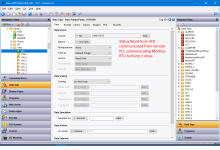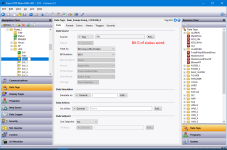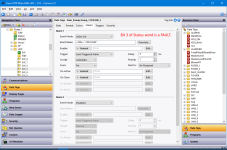Hi, I'm having an issue in crimson 3.0 when I create a programme using a case statement referencing a fault word that each bit needs to change the state of a flag tag so that it comes up in the alarm banner how do I configure the flag tag, as my script shows that it's ok syntaxes is fine but when I input the corresponding value into a setpoint no alarms come up, asked my tutor but he hasn't been much help.
Writing an Array to a flag tag in crimson 3.0
- Thread starter Taintd
- Start date
Similar Topics
Hi.
Not the fist time I'm saying this but just to give a background.
95% of my PLC programming has used Schneider over the last 10 years on...
I'm working with Crimson 3.1. Is there a way to write an array's position into a tag?
For example, I have an array size of 100, I'll call them...
I have an application where we are setting up recipes for our system.
I have a an array of UDTs to store my recipes in the PLC (CLX), We are...
Hi.
I am trying to log a large data table into a 2 dimensional array from Control logix. I have been able to successfully load single dimension...
Hi Thanks for reading this post. I Having trouble writing Wonderware array values to a compactlogix PAC.
I can read the values through a...






